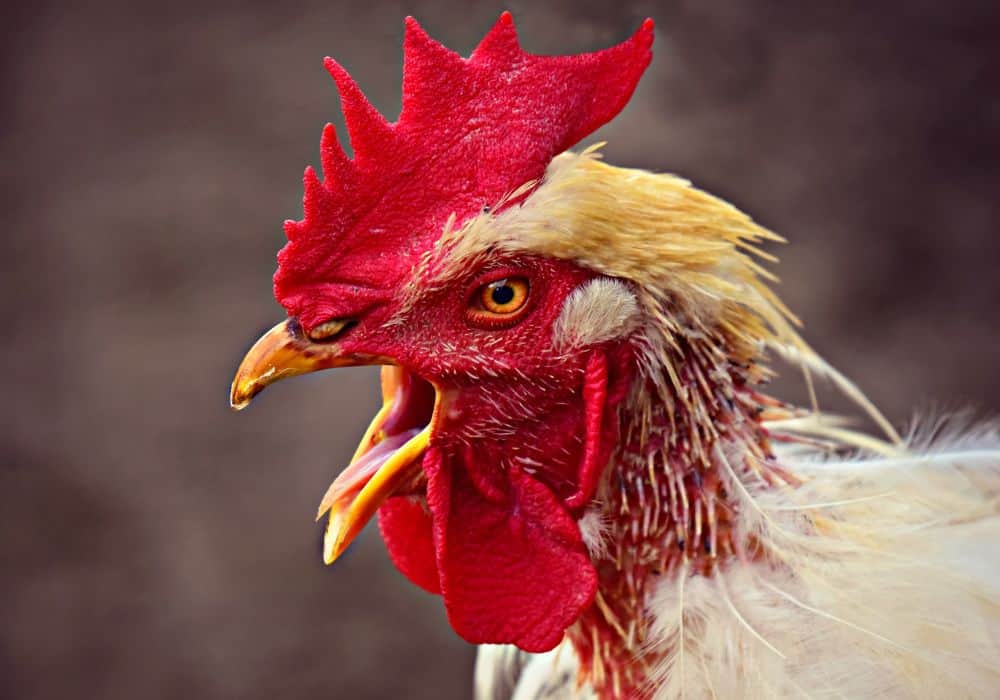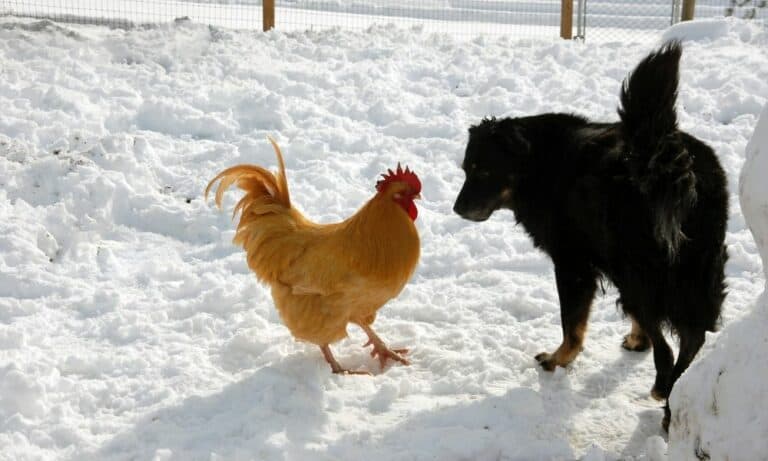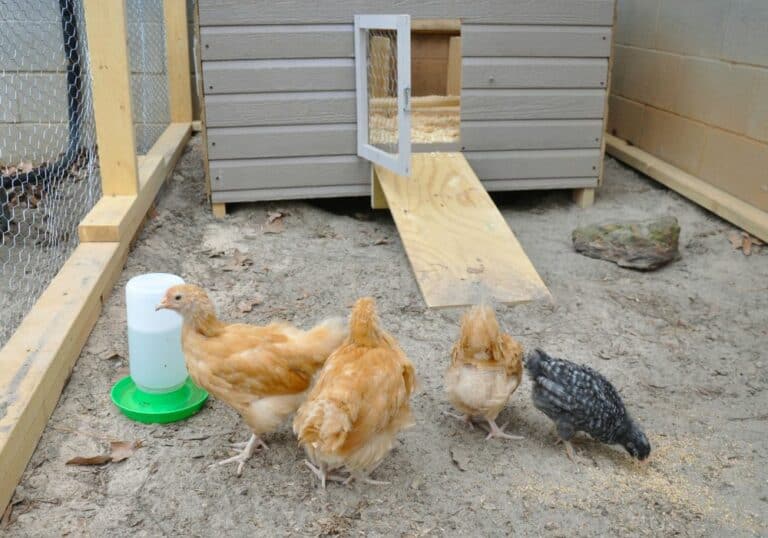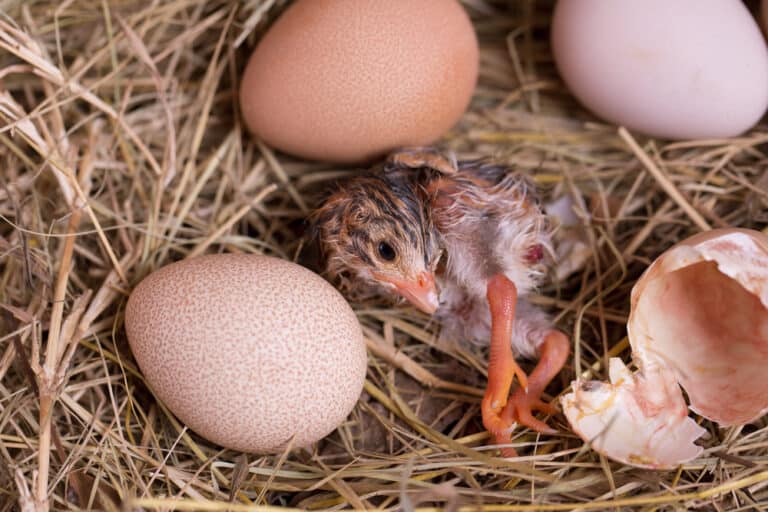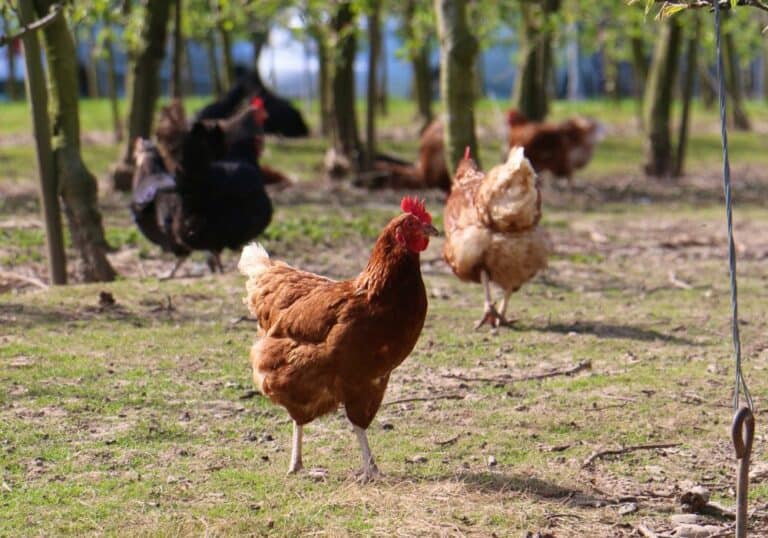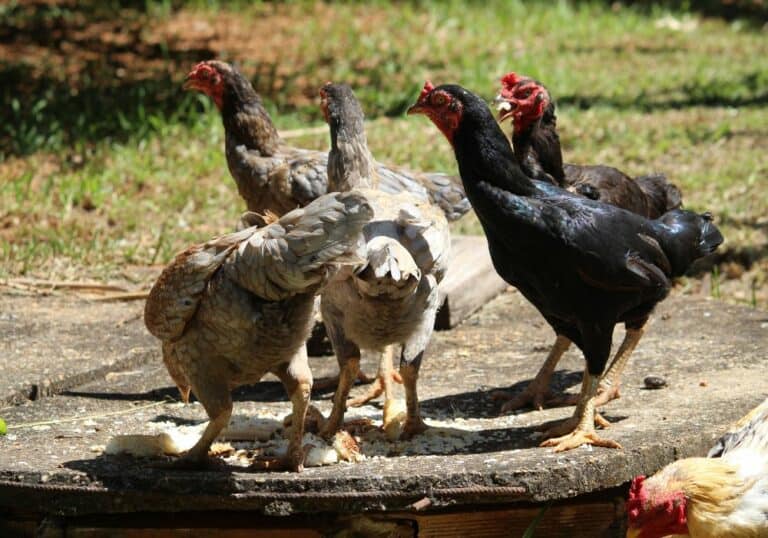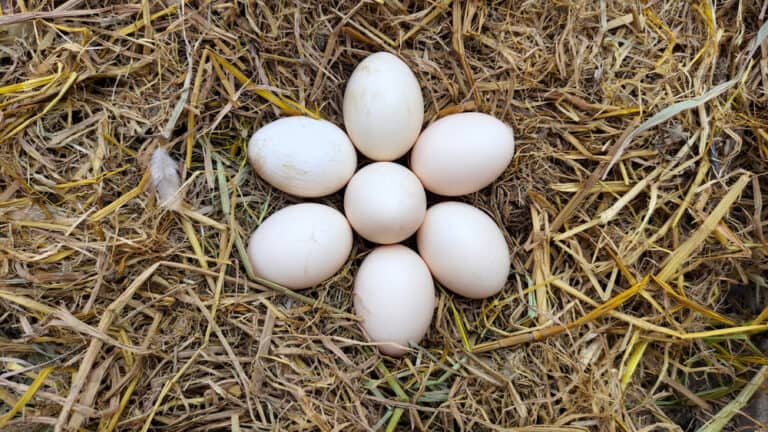While chickens share plenty of features with other types of birds, fleshy parts like their comb and wattle are fairly unique. They may appear flashy, especially against the solid plumage of most chickens, but these parts communicate quite a bit about your chickens.
There are several variations of combs that differ depending on a chicken’s breed, but wattles are pretty much the same across the board. The biggest difference to note is the size of the wattle, but all of them work to keep a chicken cool and signal key health details to their keepers.
Keep reading as we explain the importance of the wattle, what details you should pay attention to, and how common ailments affect the appearance of the chicken wattle.
The Importance of a Chicken Wattle
If you’re not already aware, the wattle is the fleshy part that hangs underneath the beak of your chickens. These, along with the chicken comb, are often smaller on hens and larger on roosters, although the breed of the bird also impacts wattle size.
Wattles serves three main purposes:
- Signaling sexual maturity
- Indicating the current health of your bird
- Regulating body temperature
While they’re a small part of your chicken’s appearance, this eye-catching part is one of the most prominent tools in monitoring and maintaining their health.
1. Signaling Sexual Maturity and Attracting Mates
When chicks emerge from their eggs, they may have the tiniest hints of yellow wattles and combs. These aren’t functional yet, but they set the stage for development.
Combs will develop first, around 3 weeks after they hatch, and they keep the yellow coloring until the birds transition to cockerels and pullets. Once puberty hits, the combs and wattles start transitioning to a pink or reddish color.
You know a chicken is fully grown when its comb and wattle have reached the expected size and have a deep, vibrant color. Most breeds have red fleshy parts, but for others the wattle will be a shade of pink, purple, or even black.
This doesn’t end with signaling adulthood. While it’s not written in stone, it seems that both hens and roosters prefer mates with larger combs and wattles. Roosters may also shake the wattle while tidbit ting to call a hen to food, improving their relationship with her.
2. Indicating the Current Health of Your Chickens
We will touch more on what you should know about the wattle and specific examples of how they communicate health issues, but understand that they’re a fantastic general indicator of your flock’s well-being.
Along with the comb, the wattle is a clear beacon of anything going wrong with your birds. It’s much easier to realize something is wrong when it’s literally printed on their face.
A chicken’s wattle should be brightly colored without any discoloration or variation in texture. This area is also prone to damage when your chickens have disputes, so any cuts here merit a closer inspection of relationships within your flock.
Some issues, like fowl pox, have distinct physical symptoms you can observe on the comb and wattle. This is one of the easiest ways to diagnose the correct illness instead of passing it off as parasites or another common ailment.
3. Regulating Body Temperature
The variations you see in comb and wattle size usually reflect where that breed of chicken originates from.
Chickens from warmer climates will have large combs and wattles that will be more effective at cooling them off as blood circulates through the area. The single comb is the most common type on chickens like the Rhode Island Red today, and it often accompanies a larger wattle for better heat dissipation.
Chickens that need to be more cold-hardy will have smaller wattles and comb varieties to limit the amount of body heat they lose. Their smaller size also makes them less susceptible to frostbite and moisture issues that could really harm breeds like Silkies.
What to Know About Your Chicken’s Wattle
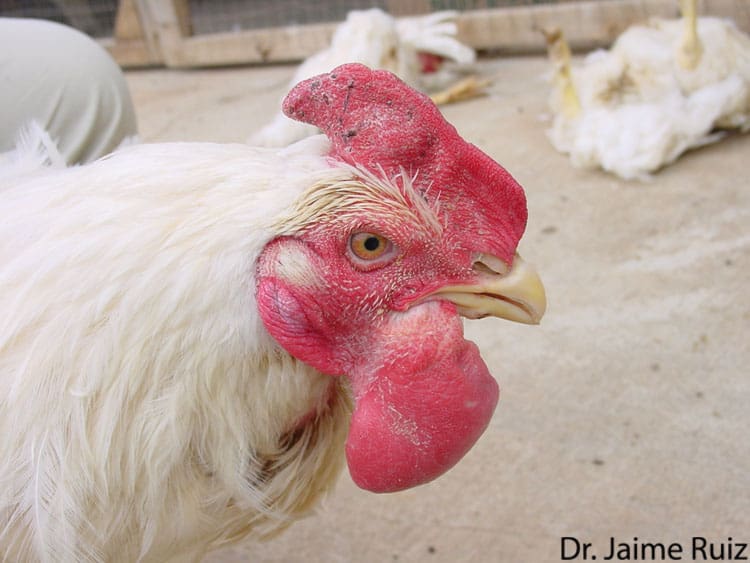
Before you can use your chicken’s wattle to monitor their health, you need to know what it looks like when your chicken is happy and healthy.
Wattle Color
Color is going to be the most obvious detail to pay attention to.
While most breeds have a bright red wattle, there are some outliers like some Silkies and fibro melanistic breeds like the Ayam Cemani.
Wattle Size
Size varies more from breed to breed and differs depending on the gender of the chicken. Because swelling is a key symptom for several issues, it’s important to know how big your chicken’s wattle is on a normal basis.
For example, Minorcas have larger wattles than Chanteclers, making it obvious they come from a warmer climate (Spain versus Quebec). Within each of these breeds, the hen’s comb and wattle are smaller than the rooster’s.
Wattle Texture
While color and size are easily discerned, the texture of the wattle isn’t apparent at first glance. Small dots or rough patches can warn you of greater issues, but they require a hands-on inspection of your bird.
Wattles aren’t completely smooth, either, which complicates things. Understand that any variation in texture is worth a closer look, especially when accompanied by symptoms such as lethargy, loss of appetite or feathers, or any other changes to the fleshy parts of the chicken.
How Chicken Wattle Can Signal Health Issues (and How to Respond)
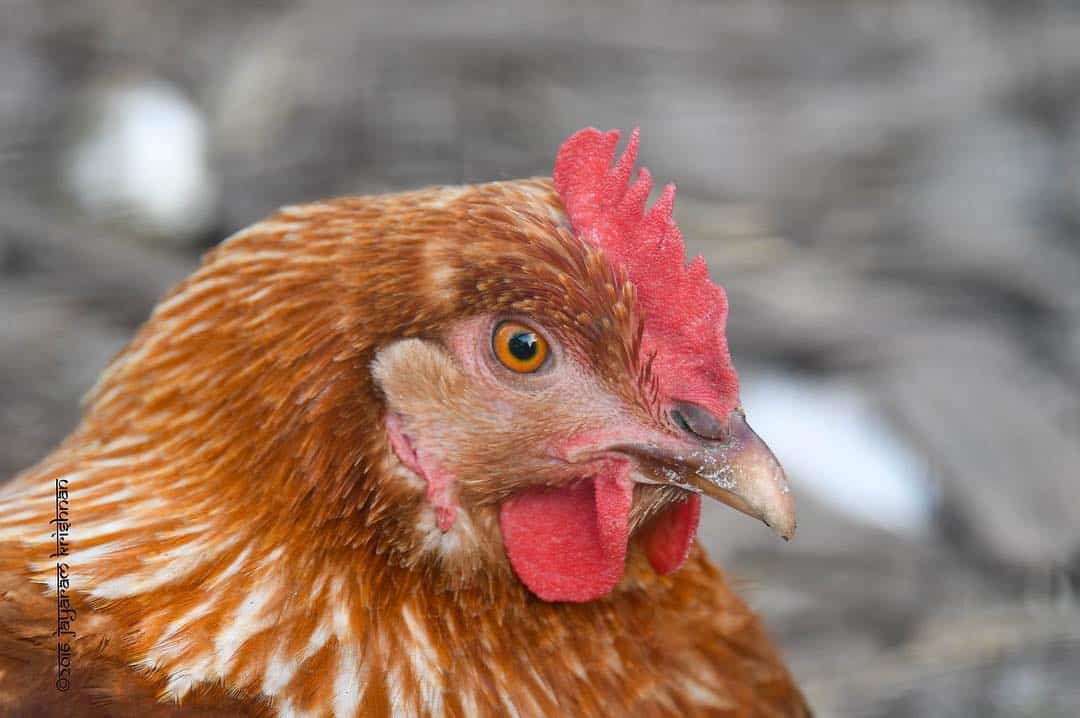
Once you understand what your chickens’ wattle should look like, it’s easy to detect changes as soon as they occur.
For a short list of explanations:
- Pale wattles may indicate molting, heat exhaustion, anemia, a parasite infestation, or dehydration
- Black spots accompany frostbite
- White or grayish lesions are a sign of fowl pox
- Blue combs signify avian influenza, while shades of purple may indicate circulatory problems
The wattle is also a sensitive area that tears easily, and you may notice wounds here that you wouldn’t find on your chicken’s feathered body.
Pale Chicken Wattles
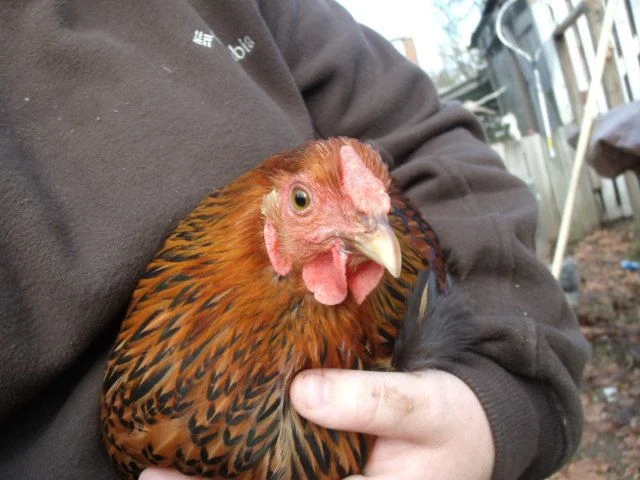
Regardless of the original color of your chicken’s wattle, paling is usually a sign for concern. This may be something normal and mild, like molting, but it can also indicate you need to respond to get them back to good health.
Chickens dealing with heat exhaustion are usually also dehydrated, and their egg production will suffer. Make sure they have constant access to water throughout the day, and consider adding more waterers and shade if they have a large area to roam.
For issues such as worms, lice, mites, or fleas, make sure you respond with the appropriate treatment. You may need to get this from your veterinarian, but there are several over the counter treatments to try.
Black Spots on a Chicken Wattle
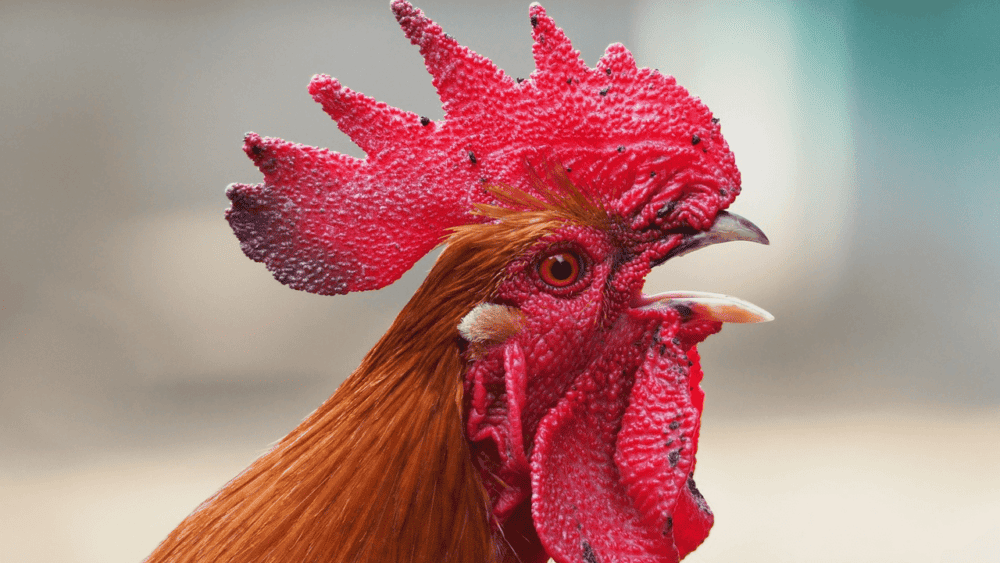
If you live in a cold area, watch out for any signs of frostbite. Chickens with larger wattles are more susceptible to frostbite, even in mildly cold damp or windy areas.
The black spots will show up as cells freeze and die. You should leave these areas alone, make an appointment with your vet so they can clean out the area properly, and respond by further insulating their coop and living spaces.
Gray or White Sores on a Chicken Wattle
Beyond the gray and white scabs, a flock with fowl pox will exhibit:
- Sudden weight loss
- Decreased egg production
- Lack of energy
- Swollen eyes
- Yellow lesions inside the mouth
Fowl pox is very contagious, and it can take many months or even years to treat. Your veterinarian will help you with treatment, but proper vaccination and repelling the insects that carry the disease are a better plan.
Blue or Purple Chicken Wattles
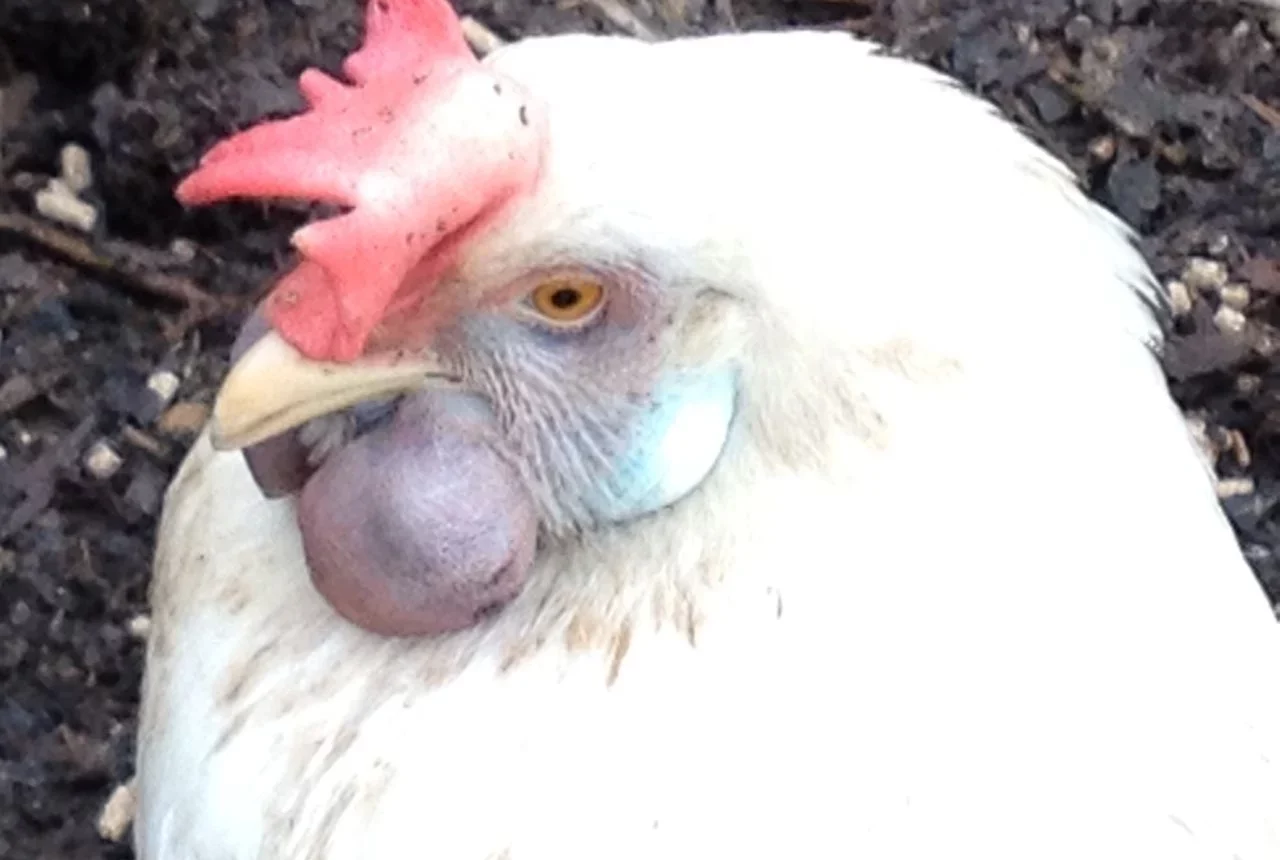
Similarly, chickens can contract avian influenza and exhibit a number of respiratory issues. As they have trouble breathing properly, their comb and wattle will turn blue or purple to reflect the lack of oxygen.
Other symptoms include:
- Soft shelled eggs
- Poor coordination
- Diarrhea
- Lethargy and loss of appetite
- Nasal discharge and sneezing or coughing
Isolate the sick chicken as soon as possible and get them to a vet for treatment. Although less common, the blue or purple color may also indicate a serious heart attack or stroke that requires more attention.
Injuries on a Chicken Wattle
The comb and wattle of a chicken are not protected by layers of feathers like the rest of their body, and they tear more easily if they get hit in a fight or stuck on something around the coop.
It’s important you stop any bleeding as soon as you notice it, then provide prompt first aid. More severe wounds may require a trip to the vet to close them up and prevent infection.
If it keeps happening, make sure you discover who keeps attacking their flockmates. Aggressive behavior requires intervention, and you may need to remove or cull the bully to keep everyone else safe.
Conclusion
Your chicken’s wattle is more than a unique feature on their face. It’s a tool for attracting mates, regulating their temperature, and helping you understand how their health is going.
Along with the comb, pay attention to your chicken’s wattle every day. This is often the quickest way to notice health issues in your flock, and it can be the difference of life and death for some.
Notice something odd with your chicken’s wattle? Let us know the situation, and we’ll help you figure out how you should respond.

